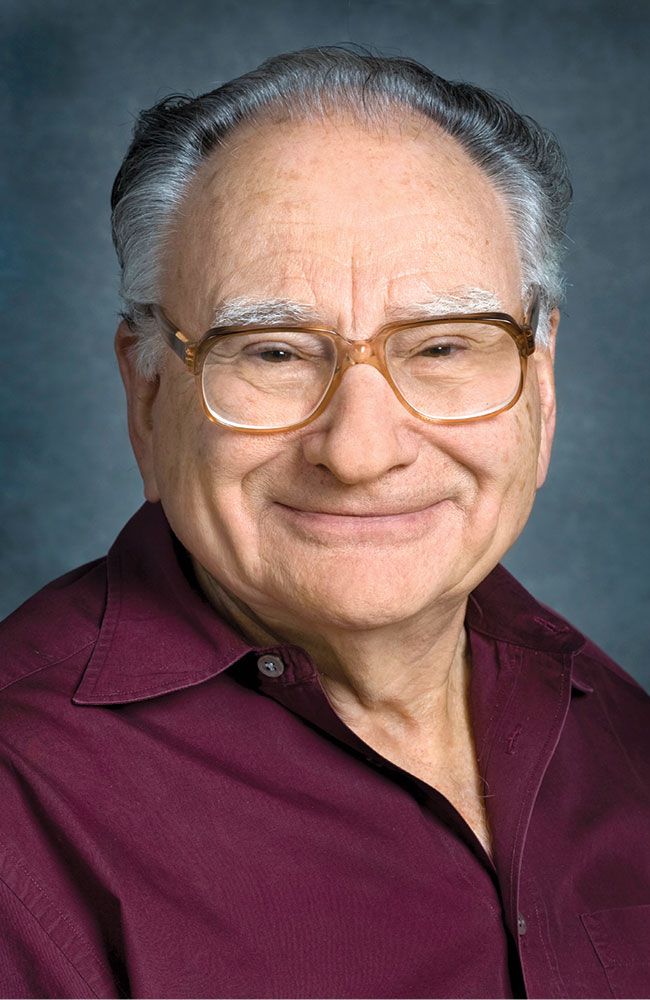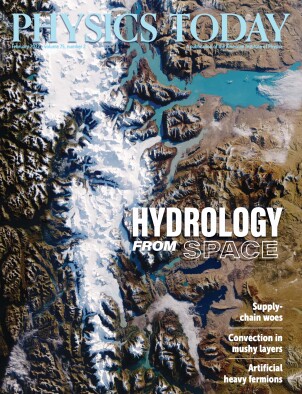Arthur Poskanzer
DOI: 10.1063/PT.3.4947
Arthur Poskanzer, a groundbreaker in exploring extreme states of nuclear matter, died peacefully in his home in Berkeley, California, on 30 June 2021.

Arthur Poskanzer
LBNL/COURTESY AIP ESVA

Art was born in New York City on 28 June 1931. Because of an illness, he could not attend school and was self-taught until sixth grade. He went to Stuyvesant High School and then Harvard University, where he received a BS with honors in chemistry and physics in 1953. Following graduation, Art spent the summer at Los Alamos Scientific Laboratory and worked on chemical separation of heavy elements. He separated 1 gram of americium—at the time a large fraction of the world’s supply of the element—from plutonium.
In 1954 Art received an MS from Columbia University, where he worked with Jack Miller, and in 1957 was awarded a PhD from MIT. Advised by Charles Coryell, Art did his thesis on the chemical separation of heavy elements, his area of expertise. Art then joined the group of Gerhart Friedlander in Brookhaven National Laboratory’s chemistry department and used accelerators to study exotic atomic nuclei. He measured the half-life of helium-8 and the properties of various isotopes that have delayed proton emission. Art’s calcium-37 data were crucial for interpreting Raymond Davis Jr’s Nobel Prize–winning solar neutrino experiment.
In 1966 Art moved to the Lawrence Radiation Laboratory (later Lawrence Berkeley National Laboratory) in Berkeley, California, where he remained for the rest of his career. Together with Joseph Cerny and Earl Hyde, he used the Bevatron proton beam and novel electronic detectors to discover numerous nuclear isotopes with an extreme imbalance of neutrons and protons, notably lithium-11. Study of such isotopes at the limit of nuclear stability remains at the forefront of nuclear-physics research.
Art used the newly commissioned nuclear beams of the Berkeley Bevalac in the mid 1970s to study nuclear matter at very high temperature and density. To measure such complex collisions, Art, Hans Gutbrod, Hans Georg Ritter, and their collaborators developed a novel instrument with a large solid angle and high granularity: the Plastic Ball detector. In analyzing the data it produced, Ritter, Art, and colleagues found that hot nuclear matter flows much like a liquid, with properties that are well described by calculations based on hydrodynamics. Their landmark result was published in Physical Review Letters in 1984.
Soon thereafter, CERN initiated plans for much-higher-energy nuclear beams in the Super Proton Synchrotron. For the program, Art and colleagues developed a new experiment, called WA80, with the Plastic Ball as a component.
The next step in the study of nuclear matter under extreme conditions, the Relativistic Heavy Ion Collider (RHIC) at Brookhaven, was approved for construction in 1990. The unprecedented complexity of RHIC collisions required new experimental approaches, and Art convened a community-wide discussion on the question. The consensus was to create an experiment based on a large-volume, high-granularity time-projection chamber in a solenoidal magnet, a concept developed by Howard Wieman. The resulting proposal, with strong leadership by Art, was approved and became the Solenoidal Tracker at RHIC, or STAR. STAR is still carrying out cutting-edge research, 30 years after its conception by Art and colleagues. The chamber at the ALICE detector at CERN’s Large Hadron Collider can likewise be traced back to Art’s pioneering vision for STAR.
STAR’s construction required significant R&D, and Art organized Berkeley Lab’s heavy-ion effort into the Relativistic Nuclear Collisions program for that purpose. Art and others from Berkeley joined the CERN NA49 experiment to prototype STAR technology.
Art also developed new techniques for flow analysis, in which he applied a novel Fourier-decomposition approach to NA49 data that definitively established the hydrodynamic flow of nuclear matter. That phenomenon remains an essential tool for studying the quark–gluon plasma. Art and Sergei Voloshin wrote an encyclopedic paper on flow-analysis techniques that is one of the most-cited papers in the field.
As the scientific director of the Bevalac and founder of the Relativistic Nuclear Collisions program at Berkeley Lab, Art was an effective administrator. His first love, however, was research. Art retired in 2002, but he did not slow down. In the 15 years after his retirement, he wrote a dozen papers on flow phenomenology and analysis techniques, and he was a principal author on 10 STAR publications.
In 1980 Art received the Glenn T. Seaborg Award from the American Chemical Society for his contributions to nuclear chemistry. In 2008 he was awarded the American Physical Society’s Tom W. Bonner Prize for the discovery of hydrodynamic flow of nuclear matter.
Art and his wife, Lucille, were well known for their online guide Restaurants in the Berkeley Area, which provided reviews of the local culinary scene. They started it in 1978 as a printed guide and put it online in 1995. Early editions also included reviews of local hot tubs, which, unfortunately, were later dropped.
A kind and generous collaborator, Art set a very high standard. His work has influenced multiple generations of scientists, and he leaves a legacy of friendship, leadership, and accomplishment.
More about the Authors
Peter M. Jacobs. Lawrence Berkeley National Laboratory, Berkeley, California.
